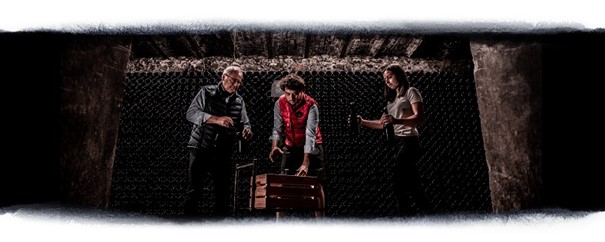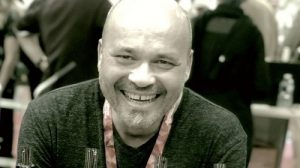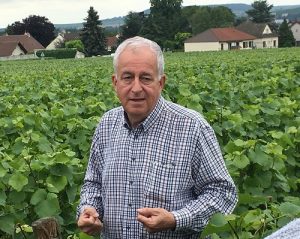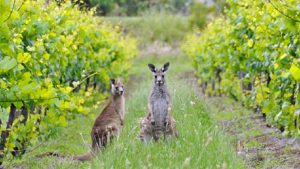
La Maison Roger-Coulon has been sitting proudly on Vrigny’s Montagne de Reims for nine generations. A family domain through and through, it’s Isabelle and Eric Coulon who currently run the show with their children, Edgar and Louise. Together, they strive to craft champagne with three key words at heart: authenticity, precision, and rigour. Working on a truly meticulous scale, the domain cultivates its vines on 115 micro-parcels that cover 11 hectares in all, and they have recently celebrated the arrival of an organic label, a stamp of approval for their chemical-free methods and agroforestry projects. Each cuvée has a story to tell and an identity to express, so we spoke to Isabelle Coulon, a vintner with tales to recount.
Could you tell us about the estate’s history?
Domaine Roger-Coulon was founded in 1806, which means our family has been settled in Vrigny for over two centuries now. Before the bubbly, our pre-Revolution ancestors were vignerons who made still wines on the Montagne de Reims. My husband Eric and I represent the eighth generation here, and our children Louise and Edgar joined us three and six years ago respectively. We can be sure the domain gets passed on.
You tend to over a hundred parcels across 11 hectares, so what’s your approach to terroir?
Exactly, we have 115 different parcels across five villages. We’ve carried out some intensive research on our parcels, isolating them, then cultivating and harvesting them all with as individual an approach as possible. Crafting wines with strong identity is at the heart of what we do, and each plot has its own characteristics due to varying levels of exposure, where it sits on the slope, and the geology of the ground below the vineyard. All of these factors influence the intrinsic features of the grape, so we try to work in a way that reflects this in the final bottle. Every champagne we make comes from vines we’ve grown ourselves, and there’s a deep family philosophy behind this. On average, the vines are around 40 years old, and we even have a rare franc de pied plot that was planted just after the war.
How would you describe your champagnes? What kind of wine do you strive to make?
Well, what we’re not looking for is a high yield at any cost. On the contrary, we want to grow healthy grapes with concentrated aromas so that we can produce fine wine. We have six cuvées in all, and each of them has their own story and specificities. I’d say the key idea that drives the Roger-Coulon style is one of harmony and elegance, and the expression of our terroirs without artifice. The sparkling element is delicate; the only job for the bubbles is to highlight the wine’s character, not to cover it up.
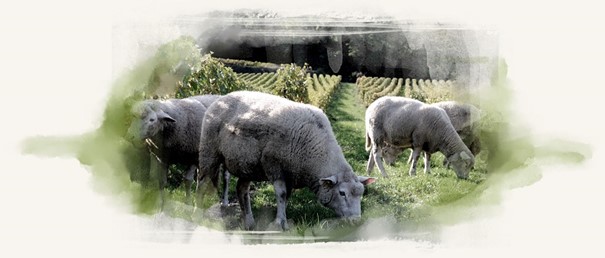
‘We think the soil and plant life support each other’
Could you talk a bit about the domain’s agroforestry efforts?
My son Edgar was the one to introduce this; he wasn’t following a trend, he was actually inspired by his ancestors who planted fruit trees at the edge of their parcels. The idea is to recreate an environment that has already existed, rather than constructing an artificial one. We want our vines to be happy and independent, so it makes sense to have a harmonious ecosystem where nature can flourish in all its diversity. We think the soil and plant life support each other. We’ve been experimenting with this for a few years already, and we’d like to extend the practice across the whole domain, though this has to be done step by step. Plus, we’ve got sheep that come to graze in the vineyards during the winter, a flock brought by a shepherd friend of Edgar’s.
What are you focusing on most for the next few years?
We’ll be supporting our children during this transition period, which is really important for the future of the domain. We let them get on with it, really, they’re really dedicated and work well in the vineyard and the winery. We’d also like to bring more precision to our parcel-based work, as this is part of our constant improvement. As I mentioned just before, we’re interested in expanding our agroforestry practice, gradually moving towards the ideal ecosystem for making fine wine. Our maturation process is also a central concern, as we’re currently working with vats, demi-muids, and small 220-litre casks. We wanted to create some new cuvées, but our harvest was cut by almost 80% in 2021, it was heart-breaking, so we’re holding onto this project for later. Let’s hope the 2022 vintage will be more clement.
Out of all your wines, what’s your personal favourite?
It’s hard to choose since we put our heart and soul into the whole range. If I can choose two, I’d start with the l’Hommée cuvée, an extra-brut with a three-gram dosage. This cuvée is made from grapes grown on some of our oldest and most emblematic land, home to the vines of our ancestors for over 200 years. L’Hommée is a cuvée that ties us to our terroir and our history! With this cuvée, we seek precision, especially in the bubbles, and a gentle, voluptuous texture on the palate. The second one that springs to mind is L’esprit de Vrigny, a natural brut champagne made from Pinot Noir, Pinot Meunier, and Chardonnay grown in clay, sand, and chalk soil respectively. This is our landmark champagne, the maison’s iconic cuvée and the village’s identity in a bottle. It’s matured for at least six years in the bottle, and it has a gorgeous balance of tension and minerality.
Thanks to Isabelle for chatting with us! You’ll find Roger-Coulon Champagne on our site!
